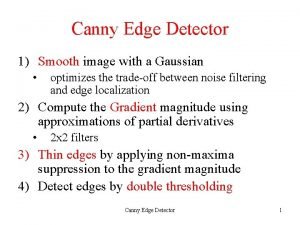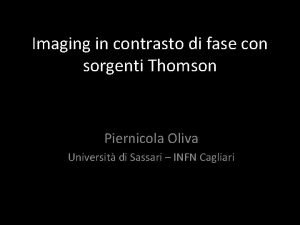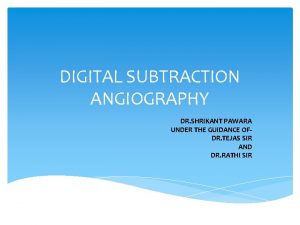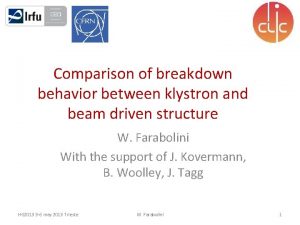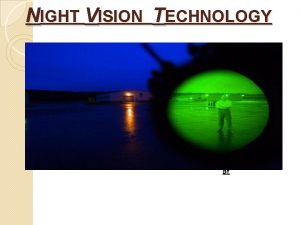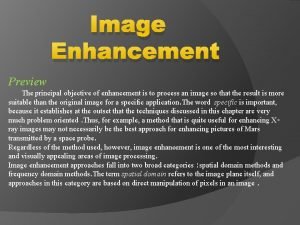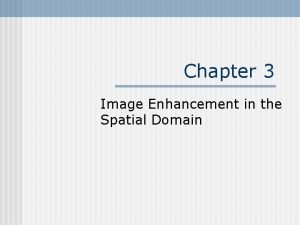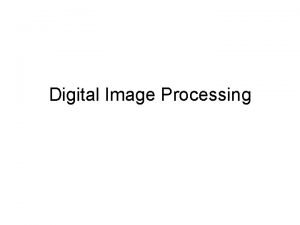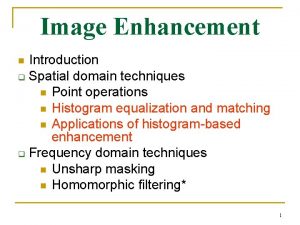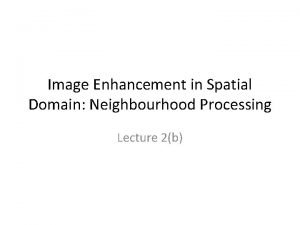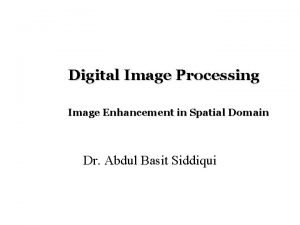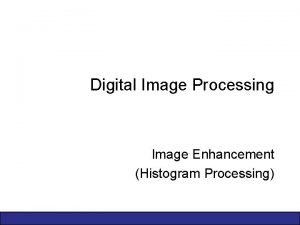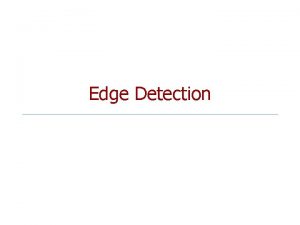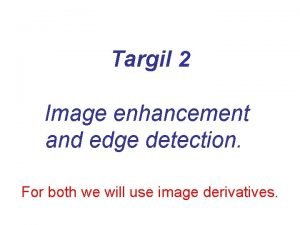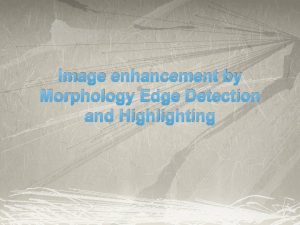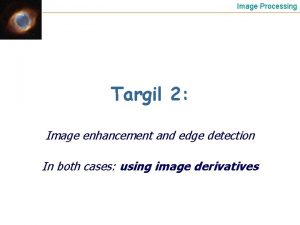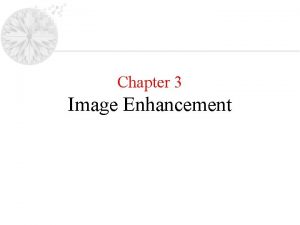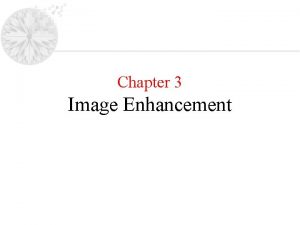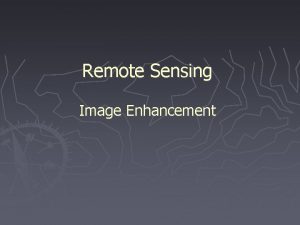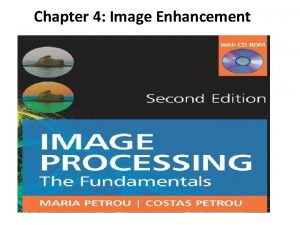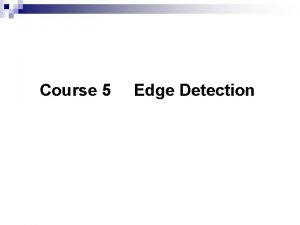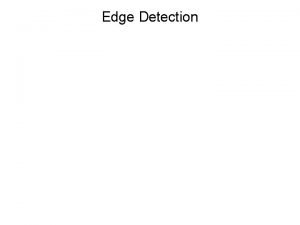Image Enhancement and Edge Detection of Renal MR
















- Slides: 16

Image Enhancement and Edge Detection of Renal MR Images Sara Alford ECE 533 Final Project

Problem Statement: l To apply image enhancement techniques to magnetic resonance angiography (MRA) and blood oxygen level dependent (BOLD) magnetic resonance (MR) images in order to improve contrast and aid in post processing.

MR Angiography l l MRA uses a contrast agent to improve contrast in the vasculature. These images have a dark background and tend to be of low overall contrast.

Renal BOLD MR Images l l Blood Oxygen Level Dependent (BOLD) images consists of a series of 16 images per slice. From these images, the renal oxygenation level can be extract for the medulla and cortex.

Histogram Equalization l Improves image contrast by applying a transform to data. l Data set now has a more uniform pixel intensity distribution.

Histogram Equalization: MRA Example Images have an better definition of the kidney and organs Original Image Histogram Equalization

Histogram Equalization: BOLD MR Example Increased contrast between the medulla and cortex in kidney Original Image Histogram Equalization

Histogram Equalization Methods METHOD 1: Crop image, then perform the histogram equalization METHOD 2: Perform global histogram equalization, then crop image to desired size

Cropping Images l Better contrast seen if images cropped first before histogram equalization (Method 1). l Minimizes the effect of the dark background pixels on the region of interest. l Global histograms result in more gray images for the kidney, whereas cropping first leads to better contrast in images. Global Histogram Equalization, then cropped to right kidney Cropped First, then Histogram Equalization.

Negative Images l. Negative images enhanced white or gray details in a dark background. Branching renal arteries, shown dark, can be distinguished better. l Easier detection of the darker components of original image such as the kidneys, intestines and bowel. l

Subtraction Images l l Subtraction image leads to enhancement of regions of improved contrast due to the histogram equalization process. Best images when cropping completed prior to histogram equalization. Subtracted Image = Histogram Equalized Image – Original Image

Edge Detection Of BOLD Images l l In order to post process BOLD MR images, the medullas need to be distinguished Medulla appear dark in comparison to the cortical tissue Medulla

Edge Detection Results Sobel Operator Prewitt Operator Canny Operator

Results l MRA and BOLD MR image contrast was improved by using a histogram equalization process l The best results occurred when the region of interest was cropped, and then technique was applied

Results l Subtracted images provided a hybrid negative image that enhanced areas of improved contrast due to the histogram equalization l For edge detection, the Canny operator provided the best results, though analysis wasn’t as helpful since it also captured vessel edges.

Any Questions? ?
 Ira pré renal renal e pós renal
Ira pré renal renal e pós renal Ira pré renal renal e pós renal
Ira pré renal renal e pós renal What is canny edge detection in image processing
What is canny edge detection in image processing Vasa recta vs peritubular capillaries
Vasa recta vs peritubular capillaries Edge enhancement
Edge enhancement Road mapping in digital subtraction angiography
Road mapping in digital subtraction angiography Rising edge and falling edge
Rising edge and falling edge Image enhancement in night vision technology
Image enhancement in night vision technology Objective of image enhancement
Objective of image enhancement Image quality repair
Image quality repair Image enhancement by point processing
Image enhancement by point processing Image enhancement in spatial domain
Image enhancement in spatial domain Digital enhancement definition
Digital enhancement definition Image enhancement in spatial domain
Image enhancement in spatial domain Image enhancement in spatial domain
Image enhancement in spatial domain Image enhancement in spatial domain
Image enhancement in spatial domain Image enhancement
Image enhancement


